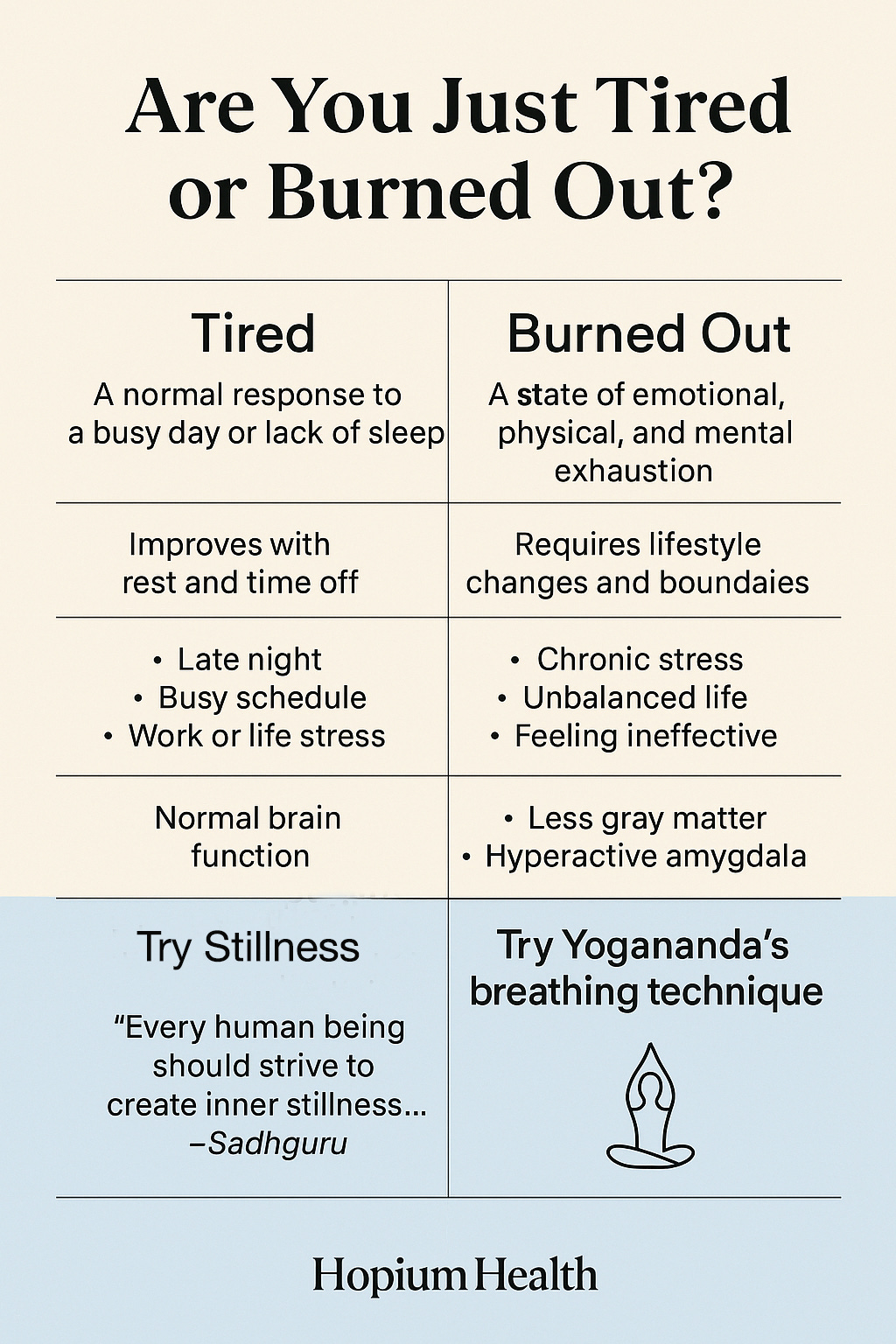In the early 1990s, you could walk by the Lever House on Park Avenue and see something you don’t see much anymore: peace. There were clusters of executives, some from Chase, some from Chemical Bank, gathered outside in summer shirtsleeves. They ate sandwiches. They chatted. Someone passed around Italian ice. Phones didn’t buzz. Laptops didn’t chirp. No one was doomscrolling between bites. I know. I used to be there.
It wasn’t perfect, but there was space. Today, those same professionals are trapped in open-floor offices or endless Zooms, multi-tasking lunch with Slack pings and calendar invites. Burnout isn’t a badge of honor anymore. It’s a public health crisis.
So what changed? And how do we get back to something that resembles clarity, energy, and presence?
The Burnout Brain
Burnout isn’t just tiredness. As neuroscience shows, it actually alters your brain. Studies reveal that burnout shrinks areas responsible for emotional regulation, decision-making, and stress response. Your amygdala (the fear center) goes into hyperdrive, making it hard to calm down even after the emails stop.
And this isn’t just a crisis for ER doctors and social workers. It’s affecting executives, remote workers, perfectionists, caregivers, and anyone trying to juggle too much with too little rest. As Dr. Marjorie Jenkins puts it, burnout isn’t just about fatigue—it’s about losing your sense of self.
Enter: The Brain Freeze
Now, let’s flip the script. What if that frozen, stuck feeling we get in moments of stress isn’t failure—but a tool?
According to neuroscientist Karin Roelofs, the freeze response is an adaptive state: your body slows, heart rate drops, and perception sharpens. You actually become better at making decisions. It’s like a built-in reboot system. Stillness, it turns out, is powerful.
And guess what? You can train it.
Roelofs showed that controlled breathing—especially long, slow exhalations—can trigger this calm clarity. Not unlike a sniper or a street performer who holds still with quiet precision. In fact, Dutch police are training with VR simulations to strengthen this state.
The Autobiography of a Yogi (and the Secret of the Breath)
Long before Dutch neuroscientists hooked people up to VR machines, Paramahansa Yogananda taught that the breath was a gateway to peace. In Autobiography of a Yogi, he describes the transformative power of stillness—not as passivity, but as inner mastery.
“The breath is the cord that ties the soul to the body. Learn to regulate it, and you can access deep calm in the midst of storm.”
The yogis knew what science is now proving: deep, conscious breathing isn’t fluffy wellness advice—it’s nervous system alchemy.
Your New Midday Ritual
So instead of reaching for your fourth espresso at 2:47 PM, try this:
Stand up. Walk outside if you can. If there’s sun, feel it.
Inhale slowly through the nose. Count to 4.
Exhale even more slowly through the mouth. Count to 6 or 8.
Repeat for two minutes. Don’t aim to calm down—just breathe and observe.
If you’re lucky, you might even find a spot with a bench and a sliver of sky. You might even remember the taste of Italian ice.
Stillness is Not Weakness
We’ve been conditioned to move faster, do more, never stop. But stopping isn’t failure. It’s wisdom.
Stillness is a kind of strength. It’s what allows you to think clearly, act wisely, and feel like yourself again.
So today, give yourself permission to pause.
Even if it’s just for a breath.
Even if it’s just long enough to imagine you’re back on Park Avenue—Italian ice in hand, the world moving a little slower, and your soul finally catching up with your schedule.






Stillness isn’t weakness 🧘♂️—it’s how we heal & thrive 🌱
A beautiful reminder that stillness isn’t a luxury—it’s a necessity. 🍧🧘♂️